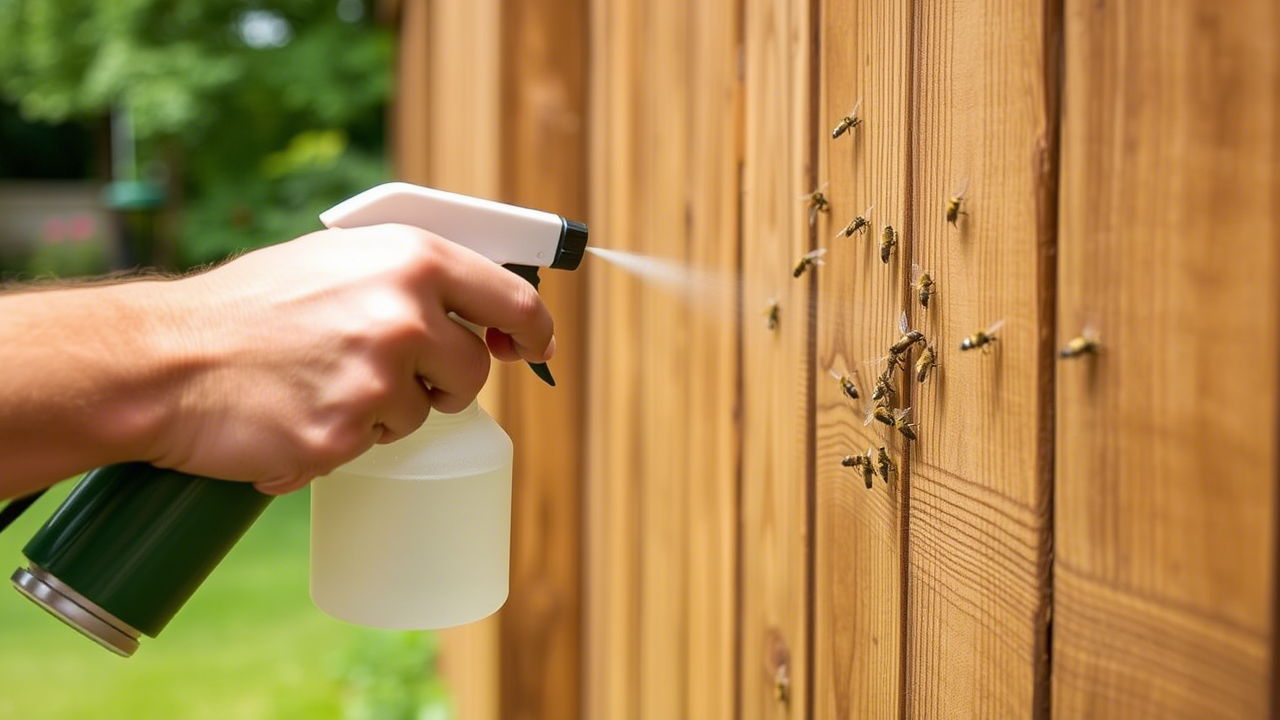Carpenter bees are fascinating creatures, but when they invade your home or garden, they can quickly become a nuisance. These solitary bees are known for their ability to bore into wood, creating tunnels for nesting. While they play an essential role in pollination, their destructive behavior can damage wooden structures like decks, fences, and eaves. If you’re dealing with a carpenter bee infestation, don’t worry—this guide will walk you through everything you need to know about how to get rid of carpenter bees effectively.
In this article, we’ll cover the biology of carpenter bees, signs of an infestation, prevention tips, and step-by-step methods to eliminate them safely. Plus, we’ll answer some frequently asked questions to help you tackle this issue with confidence. Let’s dive in!
What Are Carpenter Bees?
Carpenter bees (genus Xylocopa ) are large, robust bees that resemble bumblebees but have distinct differences. Unlike honeybees, which live in colonies, carpenter bees are solitary insects. They get their name from their habit of drilling perfectly round holes into wood to create nests. Female carpenter bees do the drilling, while males guard the area.
Key Characteristics:
- Size: About 1 inch long.
- Color: Shiny black abdomen (females) or yellowish fuzz on the thorax (males).
- Behavior: Males are territorial and may hover near humans, but they lack stingers. Females can sting if provoked.
Understanding these traits is crucial because it helps differentiate carpenter bees from other pests like termites or wasps.
Signs of a Carpenter Bee Infestation
Before jumping into solutions, it’s important to confirm whether you’re dealing with carpenter bees. Here are common signs:
- Round Holes in Wood: Look for small, circular holes about the size of a dime in wooden surfaces.
- Sawdust Piles: Fresh sawdust beneath the holes indicates recent activity.
- Buzzing Sounds: You might hear buzzing inside walls or wooden structures.
- Male Hovering: Male carpenter bees often hover around entry points, acting as “guards.”
- Stains Around Holes: Yellowish stains caused by feces or pollen buildup.
If you notice any of these signs, it’s time to take action. Ignoring the problem could lead to more severe structural damage over time.
Step-by-Step Guide to Getting Rid of Carpenter Bees
Now that you’ve identified the culprits, let’s discuss practical steps to remove them. This process involves both DIY methods and professional intervention if necessary.
Step 1: Identify Entry Points
The first step is locating all the holes where carpenter bees have nested. Inspect wooden surfaces such as:
- Decks
- Fences
- Eaves
- Siding
- Outdoor furniture
Use a flashlight to peer into crevices. Mark each hole with chalk or tape so you don’t miss any during treatment.
Step 2: Choose Your Method
There are several ways to deal with carpenter bees, depending on your preference and the severity of the infestation. Below are effective options:
Option A: Use Insecticides
Chemical treatments are one of the most efficient ways to eliminate carpenter bees. Products containing pyrethroids or carbaryl work well. Follow these steps:
- Wear protective gear, including gloves and goggles.
- Spray the insecticide directly into the holes using a spray nozzle.
- Plug the entrances after spraying to trap the bees inside.
- Wait 24-48 hours before removing dead bees and cleaning up debris.
Pro Tip: Always follow label instructions carefully to avoid harming yourself, pets, or beneficial insects.
Option B: Natural Remedies
If you prefer eco-friendly solutions, try natural deterrents like citrus oil or almond oil. Mix equal parts oil and water in a spray bottle and apply it to affected areas. The strong scent repels carpenter bees without killing them.
Another option is diatomaceous earth (DE), a non-toxic powder made from fossilized algae. Sprinkle DE around the holes to kill larvae and discourage adults from returning.
Option C: Traps
Carpenter bee traps are affordable and reusable devices designed to lure and capture bees. Hang them near infested areas, especially under eaves or along fence lines. Check the traps regularly and dispose of captured bees properly.
For more detailed instructions on setting up traps, visit thehowtotips.com .
Step 3: Seal the Holes
Once you’ve eliminated the bees, seal all holes to prevent future infestations. Use wood filler or caulk to close gaps, then sand the surface smooth once dry. Consider painting or staining the wood afterward—it not only enhances aesthetics but also acts as a deterrent since carpenter bees prefer untreated wood.
Step 4: Prevent Future Infestations
Prevention is key to keeping carpenter bees at bay. Here’s what you can do:
- Paint or Stain Wood: Apply paint, varnish, or polyurethane finishes to exposed wood surfaces.
- Install Hardware Cloth: Cover vulnerable areas with fine mesh screening.
- Regular Maintenance: Inspect your property annually for signs of damage or new holes.
- Plant Deterrent Plants: Certain plants, like mint or citronella, naturally repel bees.
When to Call a Professional
While many homeowners successfully manage carpenter bee problems on their own, there are situations where professional pest control services are advisable:
- Large-scale infestations
- Structural damage requiring repairs
- Allergic reactions to bee stings
- Uncertainty about identifying the pest
Professionals bring expertise and specialized equipment to ensure thorough removal and long-term prevention. For recommendations, check out resources like NPMA (National Pest Management Association) .
Frequently Asked Questions (FAQ)
Q1: Are carpenter bees dangerous?
A1: Generally, no. Male carpenter bees cannot sting, and females rarely do unless handled or threatened. However, their drilling habits can cause significant property damage.
Q2: Do carpenter bees return every year?
A2: Yes, they tend to reuse old nests or build new ones nearby. Consistent prevention measures are essential to stop recurring issues.
Q3: Can I use vinegar to repel carpenter bees?
A3: Vinegar has limited effectiveness against carpenter bees. It’s better suited for cleaning than pest control. Opt for proven repellents like citrus oil or commercial sprays instead.
Q4: Will carpenter bees harm my plants?
A4: No, quite the opposite! Carpenter bees are excellent pollinators and contribute positively to ecosystems. Their presence benefits gardens and crops.
Q5: How much does professional carpenter bee removal cost?
A5: Costs vary based on location, infestation size, and service provider. On average, expect to pay between 100and300 for comprehensive treatment.
Final Thoughts
Dealing with carpenter bees doesn’t have to be overwhelming. With the right knowledge and tools, you can protect your property while respecting these valuable pollinators. Remember to act promptly at the first sign of trouble, employ safe removal techniques, and implement preventive strategies to keep your home bee-free year-round.
For additional tips and insights, explore our website, thehowtotips.com . We offer expert advice on pest control, home maintenance, and more.
By combining effective treatments with proactive prevention, you’ll reclaim your space and enjoy peace of mind. Happy bee-battling!

